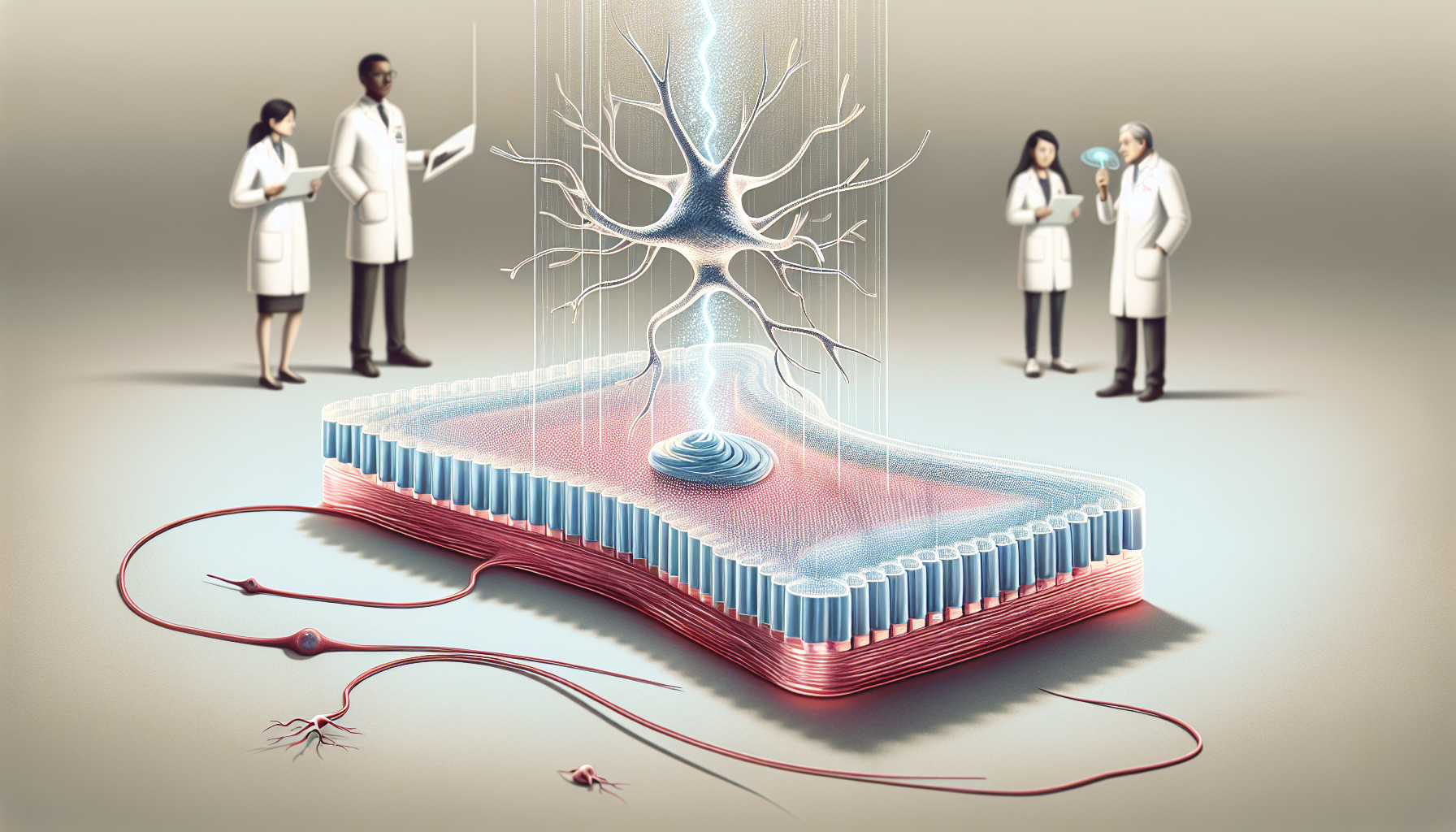 ## Neuron Stimulation Revolutionized by Magnetoelectric Material
## Neuron Stimulation Revolutionized by Magnetoelectric Material
Neuroprosthetics research at Rice University has achieved a major advancement with the development of a magnetoelectric material. This material can transform a magnetic field into an electric one, offering a less invasive approach to stimulate neurons.
The Significance of Magnetic Fields
Magnetic fields are highly beneficial in medical procedures due to their ability to pass through tissue without causing harm. The scientists have leveraged this feature to develop a material that can generate a slight electrical current near a neuron when injected into the body. This current effectively triggers the neuron, eradicating the need for intrusive implants.
The potential of this technology has already been demonstrated in the reconnection of a completely severed sciatic nerve in rats, indicating its potential use in neuroprosthetics. This is a notable progress, considering that neural stimulation can have diverse therapeutic impacts. Yet, the process of implanting neural stimulators is intrusive and may necessitate subsequent removal due to device malfunction or battery replacements.
A Dash of Ingenuity
The scientists aimed to develop a material that could be effortlessly integrated into the body and stimulate the nervous system. “We questioned if we could develop a material so minute that merely a dash of it inside the body could stimulate the brain or nervous system?” said Joshua Chen, one of the researchers involved in the study.
The material they created includes a piezoelectric layer of lead zirconium titanate sandwiched between two layers of metallic glass alloys that are magnetorestrictive. Additional layers of platinum, hafnium oxide, and zinc oxide were also incorporated. The magnetorestrictive elements vibrate when an alternating magnetic field is introduced, which then generates electricity due to the properties of the piezoelectric layer.
Bridging the Neurotechnology Disconnect
The researchers have proven that this technology can reinstate function to a fully severed sciatic nerve in rats. “We can employ this metamaterial to reconnect a severed nerve and reestablish rapid electric signal speeds,” stated Chen. This groundbreaking accomplishment overcomes numerous obstacles in neurotechnology and paves the way for other applications like sensing and memory in electronics.
In Summary
This magnetoelectric material’s creation signifies a considerable advancement in the neuroprosthetics field. By transforming magnetic fields into electric ones, it offers a less invasive approach to stimulate neurons, potentially revolutionizing neural stimulation treatments. The work of these researchers exemplifies the potency of pioneering thought and the limitless potential of advanced material engineering.
Questions & Responses
Q1: Can you explain the importance of this magnetoelectric material?
A1: This material has the ability to change a magnetic field into an electric one, offering a less invasive way to stimulate neurons. This could transform treatments involving neural stimulation.
Q2: How does the material function?
A2: The material is made up of a piezoelectric layer encapsulated by two magnetorestrictive layers. The magnetorestrictive elements vibrate when an alternating magnetic field is introduced, which then generates electricity due to the properties of the piezoelectric layer.
Q3: What are the possible uses of this technology?
A3: In addition to its potential role in neuroprosthetics, this technology could also be utilized for other applications like sensing and memory in electronics.
Q4: How was the material put to the test?
A4: The researchers have shown that this technology can reinstate function to a fully severed sciatic nerve in rats.
Q5: What benefits does this material have over traditional implants?
A5: This material eliminates the need for intrusive implants, which can necessitate subsequent removal due to device malfunction or battery replacements. It can be effortlessly integrated into the body and stimulate the nervous system.